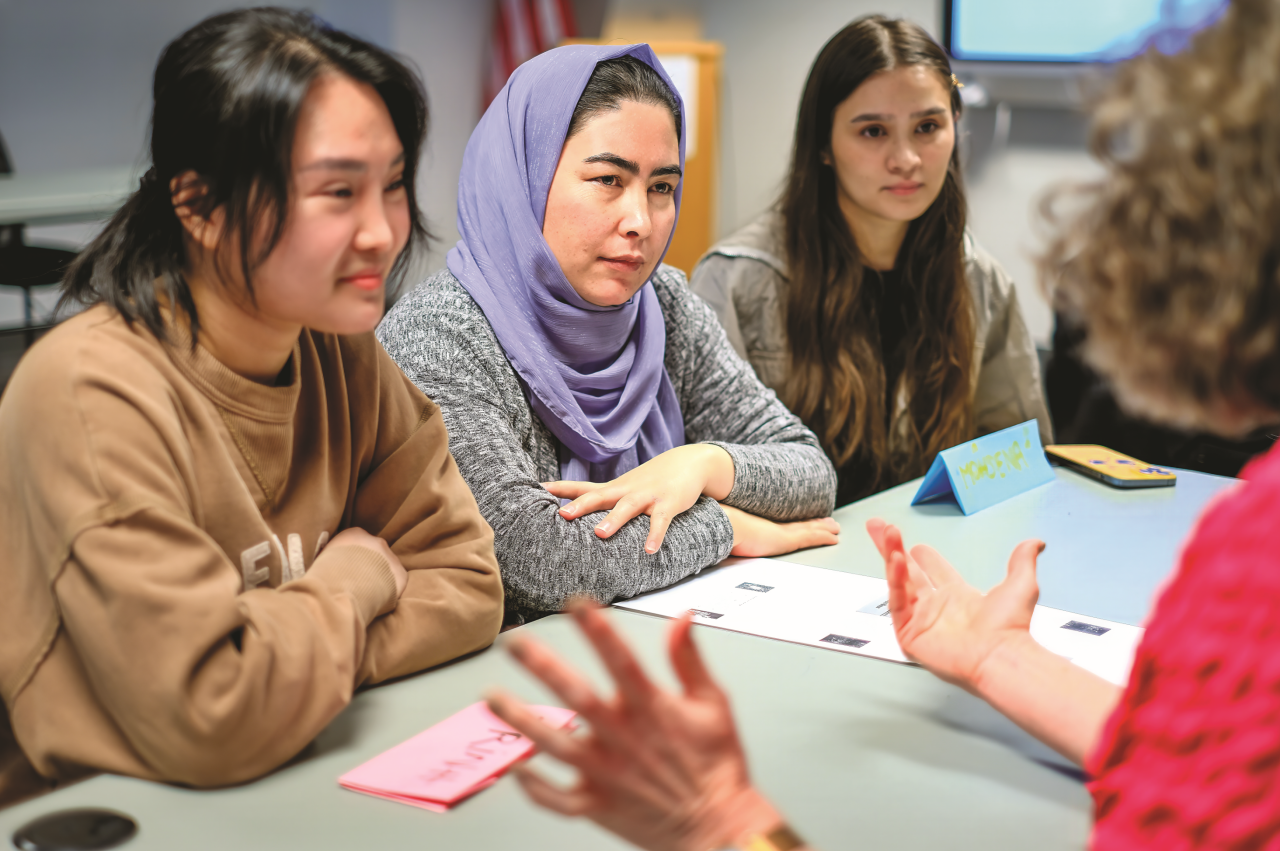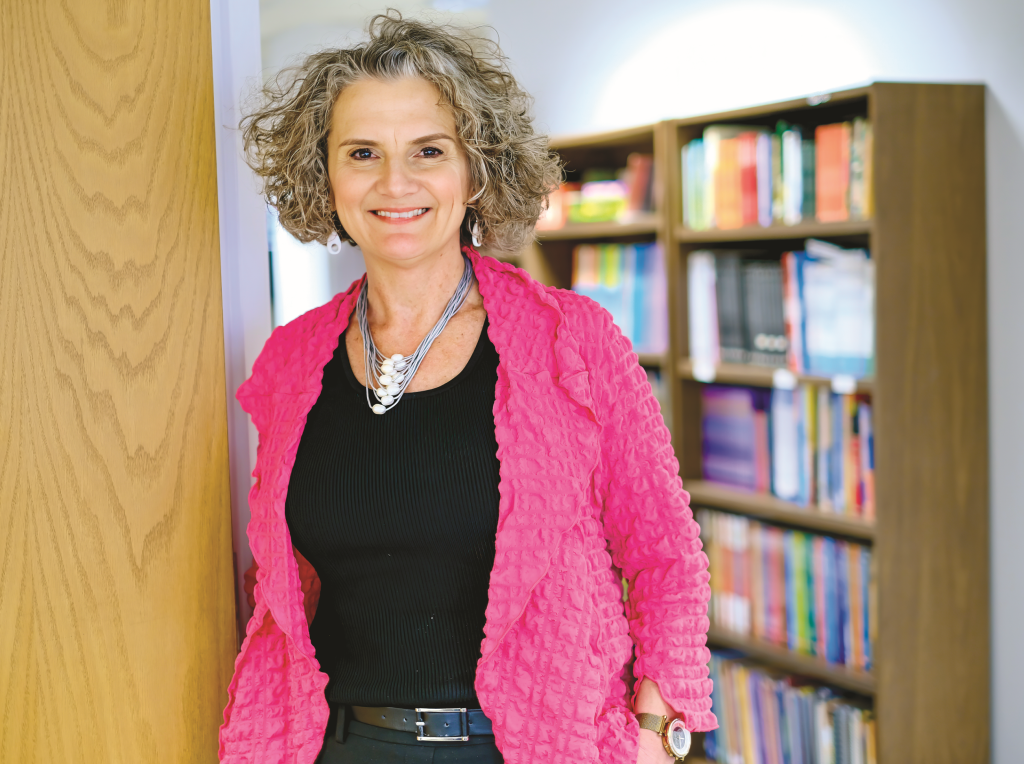How Literacy Pittsburgh is Helping to Grow Population and a More Vibrant Economy

This story is part of “The New Americans” series, a project of Pittsburgh Tomorrow.
When Mhra Moe arrived in Pittsburgh with her husband and baby daughter as refugees from Myanmar in 2014, she was fluent in Mon and Burmese, but the volunteer teacher knew little English.
Despite the trauma of having to flee the only home she ever knew, 11 days after moving here Mhra enrolled in Pittsburgh Literacy’s Family Literacy program. She learned English while her kids engaged in fun activities that taught literacy, all at no cost.
For four years, Mhra practiced her English at Literacy Pittsburgh before transitioning to their U.S. citizenship prep course. A year later, she achieved her dream of becoming a new American citizen. She then began studying for her GED at Literacy Pittsburgh, and just recently earned the equivalent of a high school diploma. Now she has a new goal: to become a medical assistant.
Mhra’s success at every stage is in large part due to Literacy Pittsburgh’s proven method for teaching English: Every lesson is relevant, useful, and applicable to everyday life in Pittsburgh.
The “textbook” for a recent class of 11 eager adult intermediate English Language Learning (ELL) students, for example, was an online news article about changes to the city’s recycling program. By reading and discussing the article, the students learned comprehension (what it means to recycle), new vocabulary (“sorting”), science (which types of plastics are recyclable), geography (where in the city to recycle electronics), and even slang and idioms (what “putting someone on the spot” means).
They practiced public speaking, too, as several students who were “put on the spot” compared recycling in Pittsburgh to how it’s done in their homeland.

This comprehensive approach to learning English is how Literacy Pittsburgh is welcoming newcomers — and helping to build a more sustainable and vibrant regional economy in the process.
“Immigration is the only part of the region’s population that’s growing, and we desperately need the region to grow,” says Literacy Pittsburgh CEO Carey Harris. “Many of our students are highly educated and highly skilled. They’re coming and looking to settle down and build their families and futures here. Pittsburgh should take it as a win that we’re attracting so many talented newcomers from other parts of the world and embrace them.”
Learning the language is foundational, says Harris. Imagine having to navigate employment, banking, health care, transit and other everyday essential systems without speaking or understanding English.
WELCOMING IMMIGRANTS HELPS THE REGION
Literacy has always been at the foundation of individual and community prosperity. Formerly known as the Greater Pittsburgh Literacy Council, Literacy Pittsburgh was founded in 1982 at the kitchen table of Mary Yardumian, who identified a need for adult tutoring, especially among a population of job-seeking former steelworkers.
Today, the organization still helps native as well as foreign-born students prepare to pass the GED, the equivalent of a high school diploma, and brush up their reading, writing, math and computer skills as the gateway to more enriching work.
Yet the biggest demand for Literacy Pittsburgh’s services now is from immigrants and refugees whose first language isn’t English.
“All of the things that Pittsburghers love about Pittsburgh,” says Harris, “immigrants do, too.”
According to Harris, Literacy Pittsburgh’s current enrollment is 22 percent higher than last year’s and 83 percent higher than three years ago. Last year the organization served 1,900 ELL students, most of them between the ages of 22 and 44.
These newcomers discover Literacy Pittsburgh on their own and through referrals from Casa San Jose, Bethany Christian Services, Jewish Family and Community Services, and other groups that also support the region’s growing population of foreign-born newcomers.
But Harris worries that Pittsburgh isn’t taking full advantage of the opportunity to attract and welcome immigrants. “We need government, business, and nonprofit providers working together to see immigration as a talent strategy, and to build and execute a plan to keep these newcomers here,” she says.
VOLUNTEERS ARE INVALUABLE
Another opportunity is to recruit more volunteers.
While Literacy Pittsburgh offers numerous in-person ELL, GED and citizenship classes, 35 percent of its students improve their English by working one-on-one with a volunteer tutor, often over video. Literacy Pittsburgh’s tutoring program is the largest in Pennsylvania, 723 percent larger than the state’s next biggest program.

Paul Battisti, who is retired from the U.S. Department of Veterans Affairs and lives in Mt. Lebanon, currently tutors eight newcomers, including a retired couple in their 60s who fled a Ukrainian hotspot to be near their daughter who resides in Pittsburgh.
“They have a remarkable story about getting out of Ukraine and traveling through several European countries before arriving here a year-and-a-half ago,” Battisti shares. “She is a retired social worker; he’s a retired doctor. They came out of the war zone with nothing. Now they’re established here and learning the language.”
Tutoring is gratifying work, says Battisti. His first volunteer assignment in 2019 was with a young mother from Nicaragua who was so committed to becoming an American that she worked with two tutors weekly.
“Getting her to the point of passing her citizenship exam was a big deal for me,” says Battisti. “People are appreciative that you’re volunteering. They’re thankful that they are learning and growing, and, in the meantime, you’re learning, too.”
No specialized skills are required to become a tutor. Literacy Pittsburgh currently supports about 500 volunteer tutors, providing them with training, a curriculum, lesson plans and books. It also brings tutors together twice annually in a professional development conference. According to Harris, student test scores show that the organization’s volunteer tutors are just as effective as professional teachers, and more are needed to meet the demand.
“If you like to read and talk,” says Battisti, “you can teach ELL.” Time and patience are also important. “It takes many years to learn in their native language and it will take many years to learn in a new language,” he notes.
Hassan Ewis has been learning English for 11 years. After fleeing a revolution in Egypt, he came to the United States on a student visa and enrolled in a three-month language course before beginning his formal studies. Now working as a software programmer, he was pleased to find the free ELL program at Literacy Pittsburgh when he moved to Canonsburg seven years ago.
He also values the camaraderie of his Literacy Pittsburgh classmates. “My life is very quiet. I’m alone; I work. This is a chance to make friends. It gives me positive energy,” Ewis says.
The confidence gained by students in Literacy Pittsburgh’s ELL program is another benefit. Harris recalls a mother who arrived with an infant as a refugee from Burma 11 years ago. Like Mhra from Myanmar, she improved her English, became a U.S. citizen and passed the GED.
“Now she’s an entrepreneur and an employer,” said Harris, “the perfect example of someone who’s coming to build their family and future here.”
Learn more about Literacy Pittsburgh students and volunteer opportunities at www.literacypittsburgh.org.







